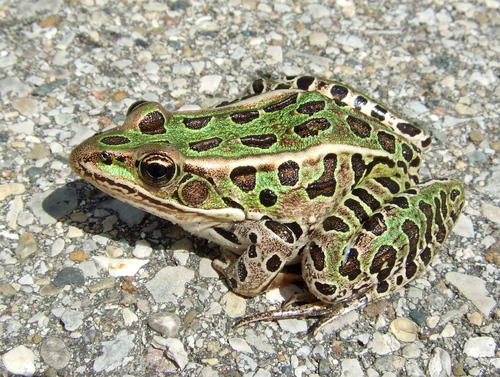
Northern Leopard Frog
Dressed in striking spots, the Northern Leopard Frog leaps across North America's wetlands. Its melodious calls and insect-catching prowess underscore its ecological importance, linking it intricately to its environment.
4-5 years
Lifespan
Least Concern
Conservation Status
Decreasing
Population Trend
Distribution Range of the Northern Leopard Frog
Lithobates pipiens, commonly known as the Northern Leopard Frog, is native to North America. Its geographical distribution spans from southern Canada, through the majority of the United States, extending as far south as northern Mexico. Notably, the species is found across a wide range of states in the US, but populations may vary regionally.
Northern Leopard Frog's Habitat
Environmental Conditions
The Northern Leopard Frog typically inhabits a variety of freshwater environments, such as marshes, ponds, lakes, and slow-moving streams. It prefers areas with abundant vegetation both in water and on land to provide cover and breeding sites. The species is generally found in regions characterized by temperate climates, with a preference for moderate temperatures allowing for seasonal variations.
Ecological Niche
Ecologically, Lithobates pipiens plays a significant role as both predator and prey. It consumes a wide variety of invertebrates, thus contributing to the regulation of these populations. This species also serves as a vital food source for a variety of predators including birds, fish, and mammals. In terms of adaptations, the Northern Leopard Frog is known for its ability to survive in slightly cooler climates compared to many other amphibians, and its skin patterns provide an effective camouflage against predators in its habitat.
Copyright @ Nature Style Limited. All Rights Reserved.
 English
English